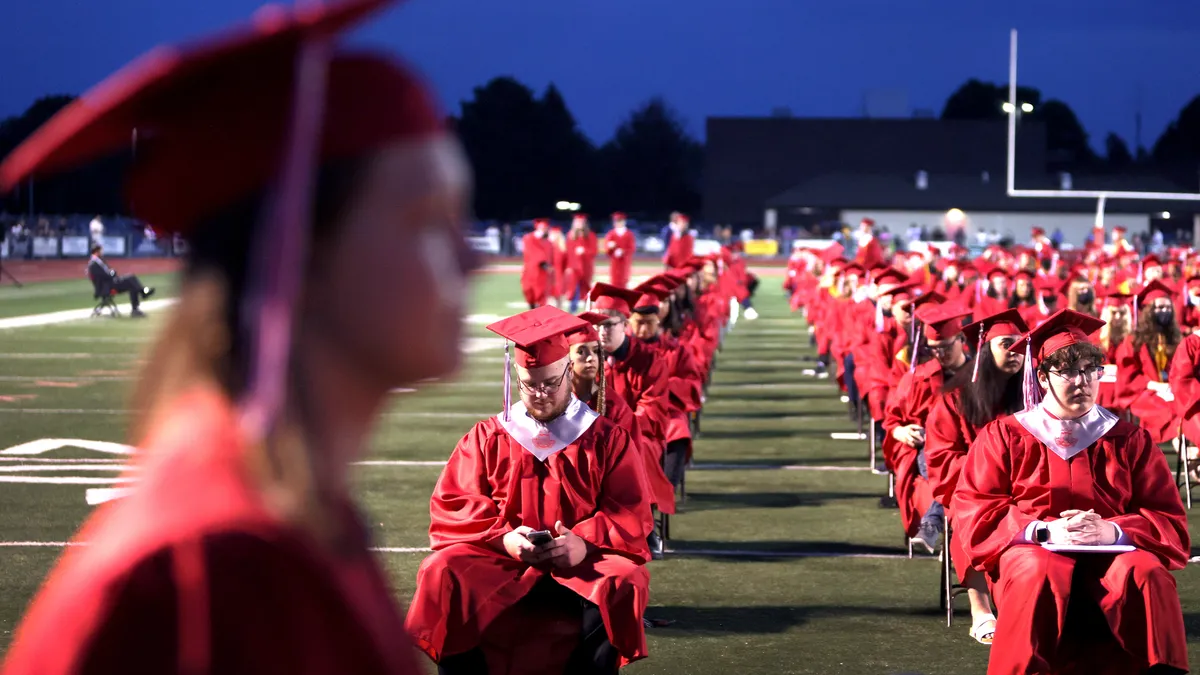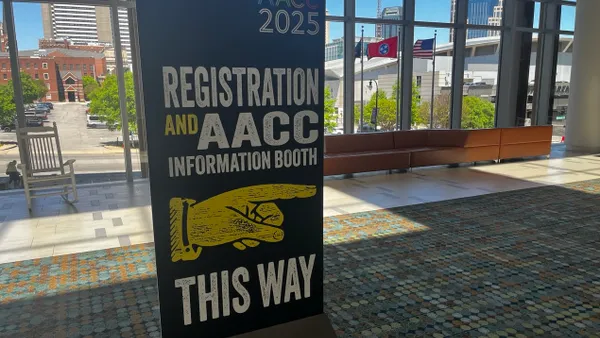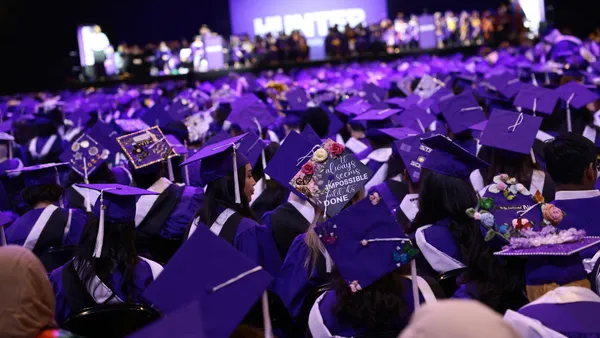Dive Brief:
- The share of high school students from the class of 2022 who enrolled in college within a year of graduating increased compared with their counterparts the year before, according to a report released Thursday by the National Student Clearinghouse Research Center.
- Among students from low-income high schools, 56% attended college within a year of graduating, compared with 53.4% of the class of 2021. At higher-income schools, this rate rose to 66.3%, up from 65.5% from the prior cohort.
- For the class of 2023, the rate of students who enrolled in college the fall after they graduated remained similar to that of students who graduated the year before, the clearinghouse found. A little over half of students who graduated from low-income schools in 2023, 52.3%, immediately enrolled in college, as did 65.1% of students at higher-income schools.
Dive Insight:
The clearinghouse has tracked postsecondary enrollment and persistence among high school graduates since 2013. For the class of 2022, college enrollment within a year increased across almost all high school demographics.
For example, 58.1% of that cohort who attended high-minority high schools — defined as those where at least 40% of students are Black or Hispanic — enrolled in college within a year. That's up from 55.9% of their peers who graduated in 2021.
High schools with low levels of minority students also saw an uptick, albeit a smaller one. At these schools, 66.6% of the class of 2022 went on to higher education within a year, up from 65.9% of the class of 2021.
One of the only high school demographics to see a decline was those in low-poverty areas, down to 74.1% from 75.2% the previous year. However, students at these schools enrolled at colleges at a much higher rate than those who attended high school in high-poverty areas.
Among the class of 2022, 53.7% of students from high-poverty schools attended college within a year of graduating, up from 50.5% the year before.
Clearinghouse analysts noted that the number of schools considered low income and high poverty dropped for students in the 2021 and 2022 graduating cohorts due to reporting shifts brought about by pandemic-era policies. This change reversed itself in 2023.
The clearinghouse's data also found signs of improvement among another graduating cohort.
The high school class of 2021 persisted in college at higher rates than students who graduated in 2020, it found.
“The improving persistence rate is an optimistic sign for high school graduates who are choosing to enroll in college,” Doug Shapiro, executive director of the clearinghouse's research center, said in a statement Thursday. “Large and widening gaps for low-income students continue to be a cause for concern, however, throughout the postsecondary journey.”
For example, 78.3% of the high school class of 2021 who graduated that year from low-income schools returned for their second year, rising from 74.9% from the prior cohort. However, that rate is far less than that of students from high-income schools.
Among those members of the class of 2021, 86.7% returned for their second year of college, up from 85.6%.













